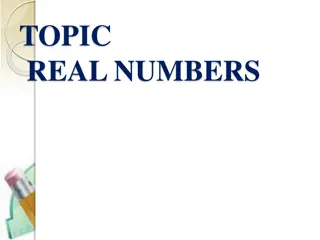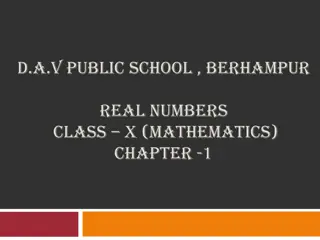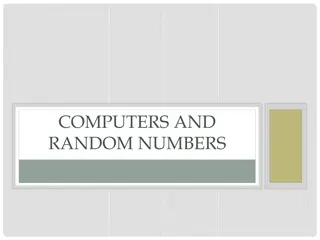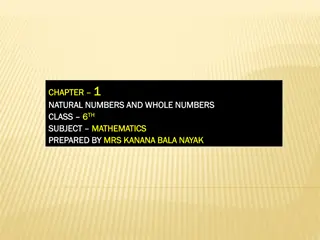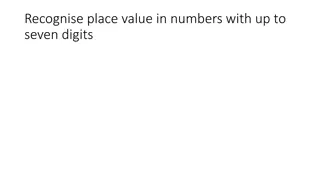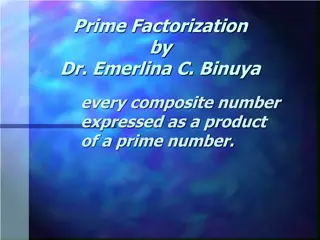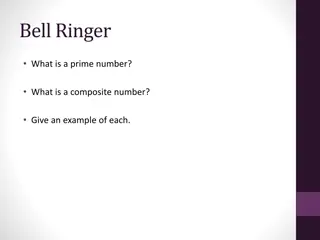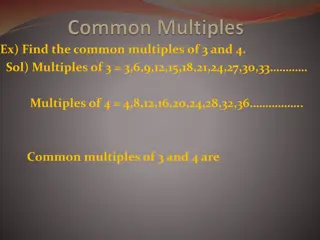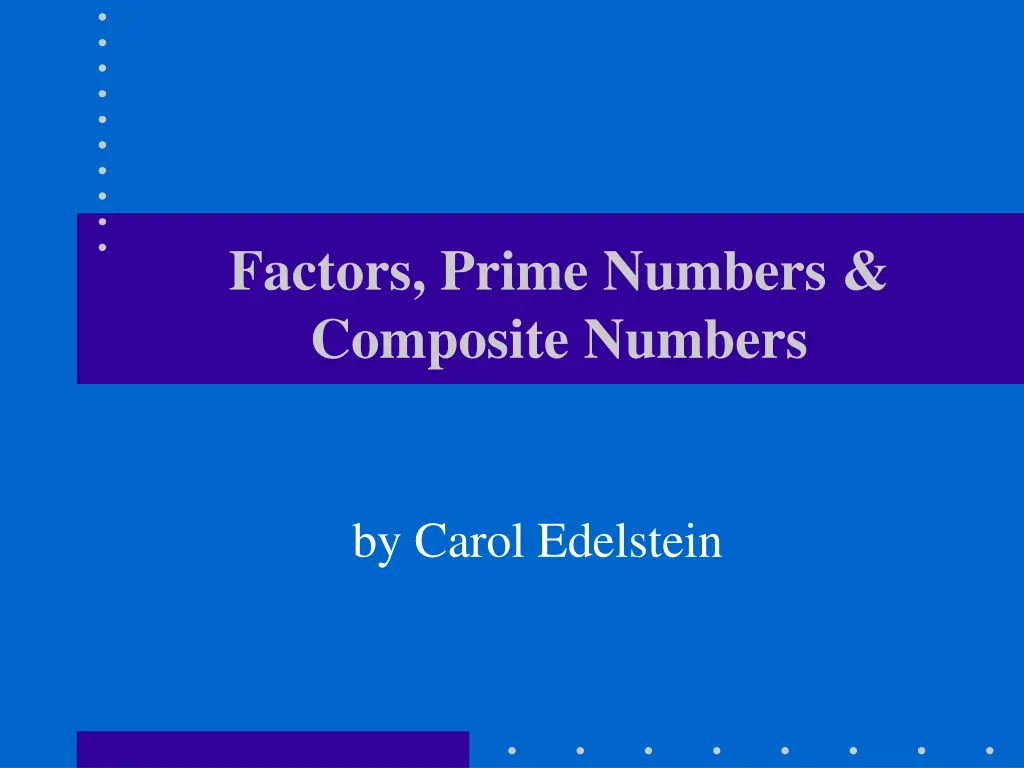
Understanding Factors, Prime Numbers, Composite Numbers
Explore the concept of factors, prime numbers, composite numbers, and prime factorization through definitions, examples, and a fun test. Learn the difference between prime and composite numbers and how to find prime factorization using the factor tree method.
Download Presentation

Please find below an Image/Link to download the presentation.
The content on the website is provided AS IS for your information and personal use only. It may not be sold, licensed, or shared on other websites without obtaining consent from the author. If you encounter any issues during the download, it is possible that the publisher has removed the file from their server.
You are allowed to download the files provided on this website for personal or commercial use, subject to the condition that they are used lawfully. All files are the property of their respective owners.
The content on the website is provided AS IS for your information and personal use only. It may not be sold, licensed, or shared on other websites without obtaining consent from the author.
E N D
Presentation Transcript
Factors, Prime Numbers & Composite Numbers by Carol Edelstein
Definition Product An answer to a multiplication problem. 7 x 8 = 56 Product
Definition Factor a number that is multiplied by another to give a product. 7 x 8 = 56 Factors
Definition Factor a number that divides evenly into another number. 56 8 = 7 Factors
Test yourself What are the factors and products? 1) 6 x 7 = 42 2) 63 9 = 7 Factors: 6 and 7 Product: 42 Factors: 7 and 9 Product: 63 3) 8 x 5 = 40 Factors: 5 and 8 Product: 40
Definition Prime Number a number that has only two factors, itself and 1. Example: 7 is prime because the only numbers that will divide into it evenly are 1 and 7.
Examples of Prime Numbers 2, 3, 5, 7, 11, 13, 17, 19, 23, 29, 31, 37
Definition Composite number a number that has more than two factors. Example: The number 8. The factors of 8 are 1, 2, 4, 8.
Examples of Composite Numbers 4, 6, 8, 9, 10, 12, 14, 15, 16, 18, 20, 21,
One is special because . . . One is not Composite. (because it does not have more than 2 factors). One is not prime. (because it does not have exactly two different factors).
Definition Prime Factorization A way to write a composite number as the product of its prime factors. 2 x 2 x 3= 12 or 22 x 3= 12
How to do a Prime Factorization - - Factor Tree Method - - 48 Step 1 Write down any composite number. 2 x 24 Step 2 Start dividing by the prime #s (start with 2). If the composite number is divisible by 2, write it down and find the next factor. If not, check if the factor is evenly divisible by 3, 5, 7, 9, etc.
How to do a Prime Factorization - - Factor Tree Method - - 48 Step 3 Check the factors. If they are prime, you are done. If they are not, proceed to Step 4. 2 x 24 2 x 2 x 12 Step 4 Continue dividing. If one of the factors is divisible by 2, write it down and find the next factor. If not, check if the factor is evenly divisible by 3, 5, 7, 9, etc.
How to do a Prime Factorization - - Factor Tree Method - - 48 Step 5 Check the factors. If they are prime, proceed to Step 6. If they are not, repeat Step 4. 2 x 24 2 x 2 x 12 2 x 2 x 2 x6
How to do a Prime Factorization - - Factor Tree Method - - 48 Step 5 Check the factors. If they are prime, proceed to Step 6. If they are not, repeat Step 4. 2 x 24 2 x 2 x 12 2 x 2 x 2 x6 Step 6 Write the Prime Factorization in Exponential Form. 2 x 2 x 2 x 2 x 3 2 24 4 x x 3 3 = 48
Find the Prime Factorization 4 4 2 x 2 Prime Factorization 22 = 4 Prime Factorization in Exponential Form
Find the Prime Factorization 6 2 x 3= =6 Prime Factorization
Find the Prime Factorization 27 3 x 9 3 x 3 x 3 Prime Factorization 33 = 27 Prime Factorization in Exponential Form
Find the Prime Factorization 12 2 x 6 2 x 2 x 3 Prime Factorization 22 x 3 = 12 Prime Factorization in Exponential Form
Find the Prime Factorization 18 2 x 9 2 x 3 x 3 Prime Factorization 2 x 32 = 18 Prime Factorization in Exponential Form
You Have Options The following screens illustrate another method that you can use to find the Prime Factorization of a Composite Number. Try it! You may like it better.
How to do a Prime Factorization - - Ladder Method - - 18 Step 1 Write down any composite number. 2 9 Step 2 Start dividing by the prime #s (start with 2). If the composite number is divisible by 2, write it on the left of the L and write the other factor below the original composite #. If not, check if the number is evenly divisible by 3, 5, etc.
How to do a Prime Factorization - - Ladder Method - - Step 3 Check the factors. If they are prime, proceed to Step 6. If not, continue the process. 18 2 3 9 3 Prime # Step 4 Continue dividing the # on the next rung of the ladder by the prime #s (start with 2). Step 5 Repeat this process until the # on the next rung of the ladder is prime.
How to do a Prime Factorization - - Ladder Method - - 18 2 3 Step 6 Write the Prime Factorization in Exponential Form. 9 3 Prime 2 x 3 x 3 Factorization Prime Factorization in Exponential Form 2 x 32
Find the Prime Factorization - - Ladder Method - - 56 28 14 2 2 2 Prime # 7 Prime Prime Factorization in Exponential Form 23 x 7 2 x 2 x 2 x 7 Factorization
Summary One is not a prime or composite number. Two is the only even prime number. Not all odd numbers are prime. (examples: 9, 15, 21, 27, 33, 35, ) All composite numbers can be written as product of prime numbers.


